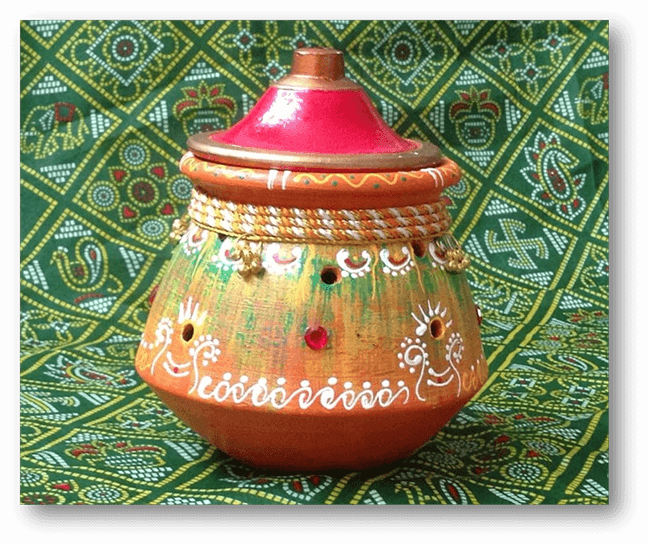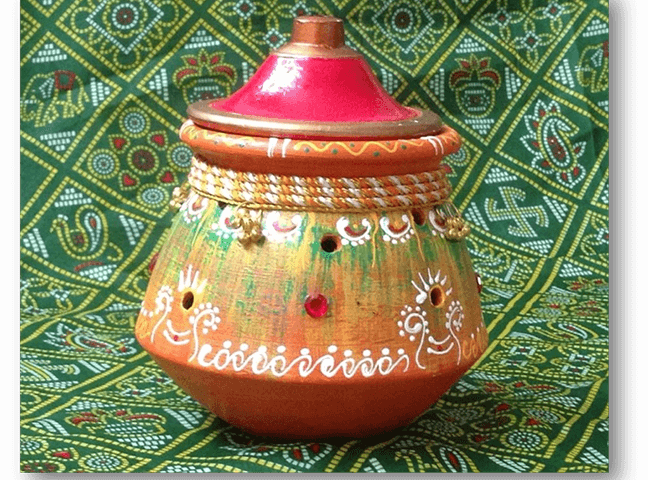Read this blog post in: Português | ગુજરાતી
Why Garba is performed during Navratri?
Garba originated in Gujarat, and is performed during Navratri. This dance form is a dramatization (sort of like a mock-fight) of the nine-day battle between Goddess Durga and the demon king Mahishasura, in which the Goddess emerged victoriously.
This is what Navratri symbolises as well - the triumph of good over evil, even if that evil stems from one’s own cluttered and undisciplined mind. These nine days give one a chance to purify one’s thoughts and start afresh.
Garbo, the earthen pot with a lamp inside
Traditionally, Garba is performed around an earthen pot (garbo) with a lamp inside, which is called a 'Garbha Deep.' This representation is symbolic. The lantern symbolises life - the foetus in the womb, in particular. The pot itself is a symbol of the body, within which divinity resides.

Garbo. Photo courtesy Diya Dipac.
The Garba costume
The Garba costume consists of a three-piece – the choli or blouse, chaniya or long skirt and an embellished dupatta. Embroidery and mirrorwork may be found on the multihued attire, making the atmosphere vibrant and lively. The men wear a kediyu (a full-sleeved kurta that is tight at the chest and flares like a frock at the waist) with kafni (multi-pleated trousers that taper towards the bottom) and a pagdi or turban.
The Garba dance
Dancers move around in a circle, making circular movements with their hands and feet around this earthen pot. This gesture symbolises the circle of life, which moves from life to death to rebirth, leaving only the Mother Divine unmoved, unchanging and invincible.
Even though it is interesting to know why we perform this dance form every year, the real essence lies in the warmth and togetherness we feel when we gather with our family and friends for nine days; a time filled with joy, love, and devotion.
The devotion is directed to the Goddess and is also a manifestation of the gratitude we feel in being alive and blessed with so much abundance. Navratri would be incomplete without this resplendent dance and this art form.
Garba songs
Garba has a devotional appeal as it is performed to bhajan and chants, praising the many divine forms of the Goddess. It is done before the aarti is performed.
While dancers may sway to the heady rhythm of garba and raas during Navratri, the lyrics of these songs are often sharp reflections on social milieu, political change and even calamities of yesteryear.
All these ballads - raas, garba and garbi (longer version of garba) have specific meters and beats.
Post by Dipac Canacsinh
Acknowledgements
I am very grateful to Mr. Pradip Vassantlal for improving the Gujarati version of this article.
I am very thankful to Diya Dipac for providing me with the picture used in this article.

